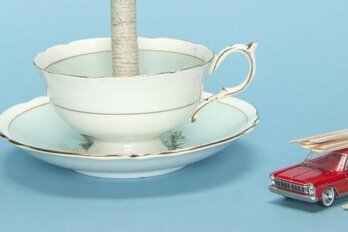With no one to properly apply the tourniquet, he afforded himself
the rare opportunity to just bleed everywhere. On the bedskirt, the garlic bowl,
the painting of a smudge that could be a farmer, the—the everywhere.
Blood became as a necessary aesthetic embellishment, the stucco,
for example. Then it began to appear functional, as grouting. Its copiousness
sort of normalized it, so he sat in his chair and began to read amid it.
Soon after, his wife came home, aghast of course, but he assured her
that the blood had probably always been there, that she should fix herself
a drink or a tomato sandwich and unwind a little bit. Being in no mood
to argue with him, she obliged. It was glamorous. And it empowered her.
So the two sat on the sofa and shared itty little stories about their childhood
vacations, their soft inaccuracies, each with their own twiggy architecture
until the man could no longer keep his eyes open. He died, of course.
In the morning, life clicked back into its old position, and the woman spent the day
crying on the phone with her sister, then the police, then the cleaners.
This appeared in the July/August 2013 issue.





